What is the difference between sales, marketing and branding?
The notion that there is an activity called “branding” that exists separate from marketing, sales, and all other business activities is ...
20 Feb 2024 35368 ViewsVery often I’m asked what’s the difference between sales, marketing and branding. Before I answer, it’s worth bearing in mind that many marketing terms are simply mental constructs. They are abstractions intended to help us conduct business more effectively. But, that doesn’t exempt them from some basic rhetorical standards.
Any definition assigned to a marketing term should be logically sound and not contradict other terms we use nor what can be observed and quantified in the real world. And, most important, the definition should have operational relevance and help us conduct business more effectively. If we don’t have some ground rules at the outset, then discussion is a bit pointless.

Apples and Oranges – Branding, Marketing, Sales and The Differences
Many people have written at length to answer the question, “What is the difference between sales, marketing and branding?” But, when I read their definitions, I always feel like they make a lot of valid points but don’t actually answer the question. That’s because it is a trick question. It’s formulated and asked in such a way as to imply that branding is an activity just like marketing and selling are activities.
Having inferred this, the writer then heads down a rabbit hole trying to define a business activity that, in essence, doesn’t exist. That’s why these definitions often wax poetic and violate the ground rules mentioned above.
When we talk about branding vs marketing vs sales, we’re talking about apples and oranges. Let’s take the apples first.
The apples represent marketing and sales. They are both discreet business activities. Put simply, marketing activities stimulate demand in the market by adapting product, price, place, and promotion in anticipation of, or in reaction to, the market situation. This helps generate, nurture, and retain leads as illustrated in the brand equity model. Sales answer the demand in the market by converting leads to customers with the exchange of money for a product or service.
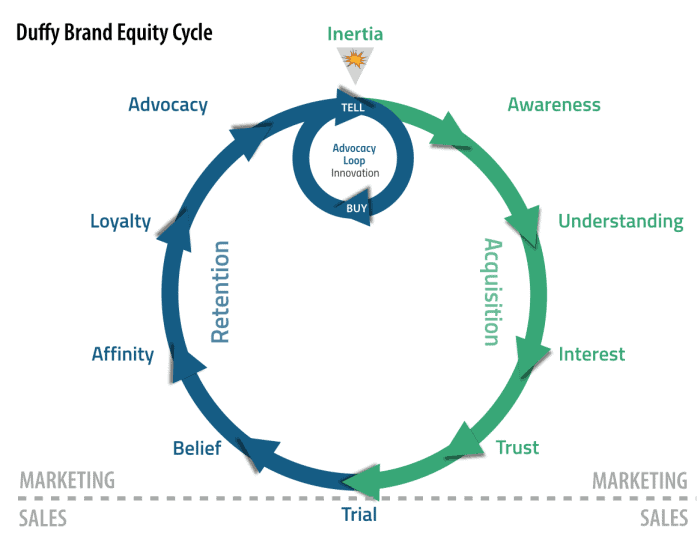
The difference between sales and marketing — where does branding fit into the picture?
Friction frequently occurs as there is difference between sales and marketing. Sales tactics don’t work very well when applied to marketing objectives. If you have ever shown up to hear a thought leader speak and then received a sales pitch instead, you know what that feels like. Conversely, if marketing tactics are used in the sales situation then nothing would ever be closed. Most CEOs understand sales. Less so with marketing.
Companies that don’t make this clear distinction often judge the success of marketing efforts with short-term sales metrics that may not entirely capture the value of the marketing activity. Companies need to establish clear boundaries and balance between the two activities since both are essential to grow revenue and profit.
What’s the difference between marketing and sales? Marketing and sales are the apples: Two discreet, yet complementary, activities. The orange in this equation is “branding.” Branding is not a discreet activity. It refers to carrying out marketing and sales (as well as every other activity in the company) in accordance with a preconceived strategy. That strategy, called a brand strategy, is intended to imbue the brand with an identity: something akin to an archetypal human personality, designed so that the trademark becomes a potent symbol of that archetype.
On our blog, you’ll also find information about international marketing challenges.
Brand Identity vs Brand Image
A more relevant disambiguation is the difference between brand identity, brand image, and brand strategy. The brand identity addresses the question, “How do we define the bigger idea behind this brand?”
Part personality, part ethos, part purpose, the brand identity is carefully constructed to both differentiate the brand from all others and to ingratiate the brand to a defined segment of the market while remaining true to itself. The brand strategy, on the other hand, addresses the question “How can the organization ensure that the brand identity we have created is conveyed clearly, consistently, and convincingly so as to create the corresponding brand image in the minds of our targets?”
In that sense, the brand strategy applies rules to the game by defining the box within which the company can engage the market to generate revenue and profit. These rules apply to all employees and activities, but it’s the individuals involved with marketing, sales, and product development who typically champion the brand strategy and spearhead its enforcement.
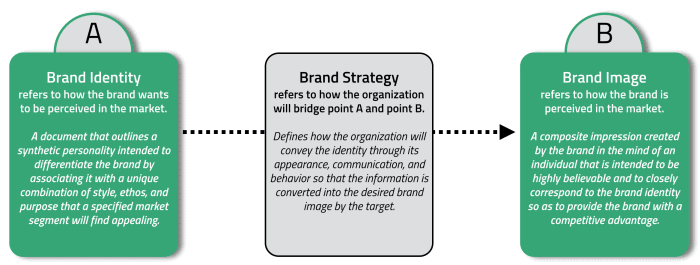
If management is able to get the brand identity understood across the organization, and, if everyone can see how their actions are likely to either contribute or detract from the brand identity, and, if employees are motivated enough to support the brand identity in their role, and, if the desired target audience is exposed to enough of their actions, then the target may assimilate this input to form the desired brand image. The brand strategy manages all those “ifs” to ensure that the brand’s identity is faithfully converted into a believable brand image.
Creating a lifelike brand is similar to the challenge faced by Artificial Intelligence developers today who strive to create lifelike computers. The ultimate test of their accomplishments is the Turing Test. The Turing Test is a test of a machine’s ability to exhibit intelligent behavior equivalent to, or indistinguishable from, that of a human. In a sense, that is what we are striving for with a brand strategy. The success of a brand resides in the organization’s ability to collectively exhibit intelligent behavior through its words, appearance, and actions that are equivalent to, or indistinguishable from, that of a human. The brand strategy orchestrates those efforts.
There are several commercial benefits to cultivating the right brand image in this way. Three main functions are: a) to provide a coherent central theme to bind together all the disparate facts and feelings about the brand; b) to create a performance expectation in line with the brand image; and, c) in the case of status brands, to communicate the buyer’s affiliation with the brand image. That may sound like a lot of psychobabble, but just think of it in terms of a brand like Harley Davidson.
No One is “Branding” at Harley Davidson
Harley Davidson is an American motorcycle company established in 1903. It is often cited as an example of a company with a well-crafted brand identity. The idea is that, given two similar motorcycles, people who are attracted to the rebellious and free-spirited Harley Davidson archetype will be more likely to choose the 1,700cc Harley over the 1,700cc Suzuki.
The Harley Davidson logo on a motorcycle: a) evokes a brand story that provides context for the brand’s features and benefits; b) evokes expectations for how the bike will perform and the service standard that will come with the purchase; and, c) evokes expectations about what the Harley Davidson brand image will say about the driver to others who share that image of the brand.
 The Harley marketing department, sales force, and product development engineers understand this. They promote the idea of a Harley as much as the bike itself because it helps differentiate their bikes and they mark a clear distinction between branding vs sales. Suzuki might be able to copy Harley’s engineering and perhaps even its design. But, good luck trying to reproduce the brand image that the logo evokes. And, Harley wants to make that perception as convincing as possible by interacting with the public in a way that is consistent with their brand identity across every touchpoint from their ads, to their dealerships, to the sound their bikes make as they roar down the highway.
The Harley marketing department, sales force, and product development engineers understand this. They promote the idea of a Harley as much as the bike itself because it helps differentiate their bikes and they mark a clear distinction between branding vs sales. Suzuki might be able to copy Harley’s engineering and perhaps even its design. But, good luck trying to reproduce the brand image that the logo evokes. And, Harley wants to make that perception as convincing as possible by interacting with the public in a way that is consistent with their brand identity across every touchpoint from their ads, to their dealerships, to the sound their bikes make as they roar down the highway.
However those activities are not “branding.” They already have names: advertising, sales, and product development. Like any advertising, sales, or product development activity in any company, they create a brand impression among the public.
The difference at Harley Davisson is that: a) all the people running those activities are clear on the brand identity; and, b) they understand how their work will either enhance or detract from that identity. This is not common, and it’s what makes Harley Davison such an uncommon brand. Testament to that is the USD $40+ million the company earns from the brand image each year through licensing its use on caps, jackets, and accessories.
In fact, Harley Davidson is often cited as one of the world’s best managed brands. A lot of the credit should go to the selection and development of such a clear and palpable brand archetype.The clarity of the Harley Davidson brand identity makes it that much easier for employees in every area of the company to apply it to their work. That helps ensure that, at every touchpoint with the public, Harley Davidson employees are  conveying and reinforcing their brand identity. But no one is “branding.” They are simply doing their jobs the Harley-Davidson way, in accordance with the Harley Davidson brand identity. The same goes for the many bike enthusiasts who ride Harleys. They have not been instructed in the nuances of brand strategy, but they understand the brand well enough to engage in an unspoken symbiotic relationship where they reinforce the brand’s identity and the brand reinforces theirs.
conveying and reinforcing their brand identity. But no one is “branding.” They are simply doing their jobs the Harley-Davidson way, in accordance with the Harley Davidson brand identity. The same goes for the many bike enthusiasts who ride Harleys. They have not been instructed in the nuances of brand strategy, but they understand the brand well enough to engage in an unspoken symbiotic relationship where they reinforce the brand’s identity and the brand reinforces theirs.
Like White on Rice
The notion that there is an activity called “branding” that exists separate from marketing, sales, and all other business activities is an unfortunate misunderstanding. It is a persistent distraction created by people trying to understand strategic marketing and promulgated by practitioners, myself included, who have kept trying to satisfy the layman’s desire for a definition to validate their fuzzy notions about how marketing works.
The term “branding” doesn’t help us when used to describe activities that create an impression on the market — that’s everything. Nor does it help when used to refer to activities designed to stimulate demand in the market — that’s marketing. Instead of going out of our way to find a home for this bastardized term, why don’t we just ditch it? The term “branding” in these contexts only serves to muddy the water in an area that is notoriously muddied enough as it is.
Branding vs Marketing vs Sales: Conclusion
Now when you know what’s the difference between sales, marketing and branding, be sure to see: Digital marketing strategist job description.
Like this post? You'll find more marketing insights in my new book: International Brand Strategy: A guide to achieving global brand growth, now available from booksellers globally. Order your copy here.

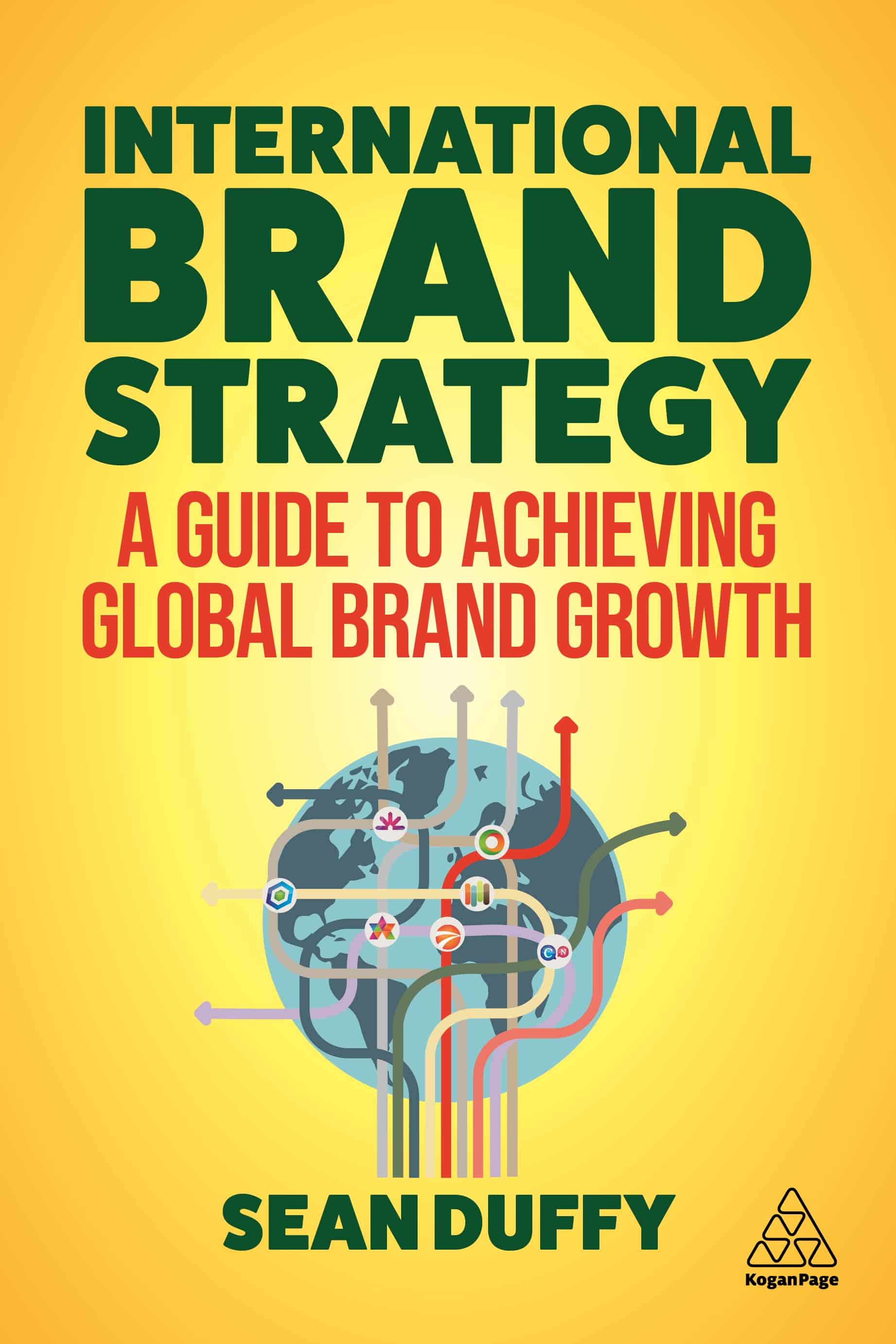

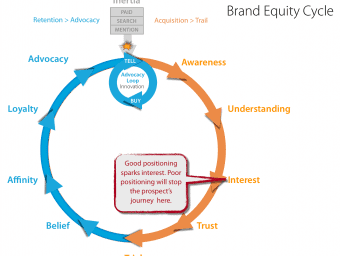
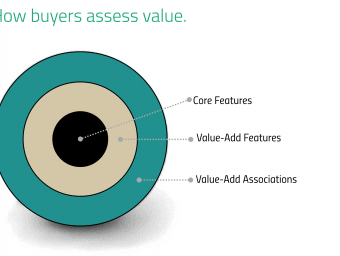


3 replies
Many people who are in the field of marketing, sometimes do not try to understand or implement such strategies those are looking small but make a big impact for building a brand name. Thanks for sharing the post.
Thanks for sharing such great information with us.